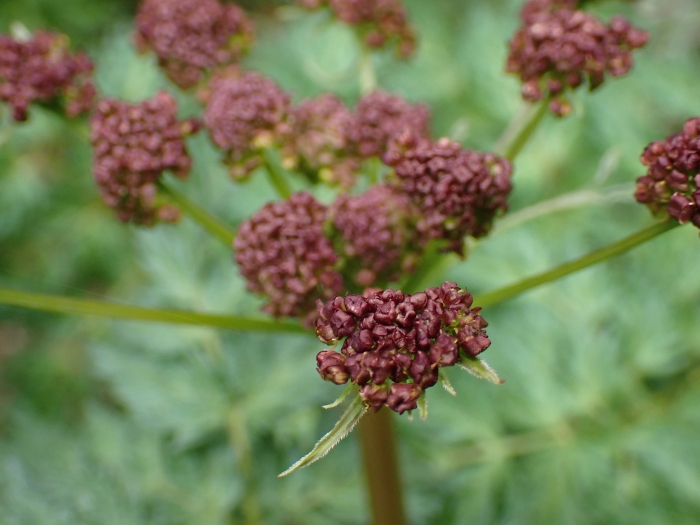Fernleaf Biscuitroot
(Lomatium dissectum)
Fernleaf Biscuitroot (Lomatium dissectum)
/
/

Aiva Noringseth
CC BY 4.0
Image By:
Aiva Noringseth
Recorded By:
Copyright:
CC BY 4.0
Copyright Notice:
Photo by: Aiva Noringseth | License Type: CC BY 4.0 | License URL: http://creativecommons.org/licenses/by/4.0/ | Rights Holder: Aiva Noringseth | Publisher: iNaturalist | Date Created: 2023-04-10T15:53:12-07:00 |

























Estimated Native Range
Summary
Lomatium dissectum, commonly known as fernleaf biscuitroot, is a perennial herb native to a variety of habitats in western North America, including rocky slopes, sagebrush steppe, and mountain meadows, particularly in the Cascade Range and Sierra Nevada. It is adapted to well-drained soils and can be found at diverse elevations, from low valleys to alpine zones. Fernleaf biscuitroot typically reaches up to 4 feet in height and features large, highly dissected leaves that resemble fern fronds. From late spring to early summer, it produces umbels of small, yellow or reddish flowers that are attractive to pollinators such as bees and butterflies.
In cultivation, fernleaf biscuitroot is valued for its unique foliage and its role in supporting native pollinators. It is drought-tolerant once established and can thrive in rock gardens, native plant landscapes, and restoration projects. It requires well-drained soil and full sun to part shade. While not commonly grown in traditional gardens, its medicinal properties have sparked interest in its cultivation. The plant’s thick taproot has been used by indigenous peoples for its antiviral and antibacterial properties. Care should be taken when handling Lomatium species, as they can cause skin irritation in some individuals.CC BY-SA 4.0
In cultivation, fernleaf biscuitroot is valued for its unique foliage and its role in supporting native pollinators. It is drought-tolerant once established and can thrive in rock gardens, native plant landscapes, and restoration projects. It requires well-drained soil and full sun to part shade. While not commonly grown in traditional gardens, its medicinal properties have sparked interest in its cultivation. The plant’s thick taproot has been used by indigenous peoples for its antiviral and antibacterial properties. Care should be taken when handling Lomatium species, as they can cause skin irritation in some individuals.CC BY-SA 4.0
Plant Description
- Plant Type: Herb
- Height: 2-5 feet
- Width: 2-3 feet
- Growth Rate: Rapid
- Flower Color: Purple, White, Yellow
- Flowering Season: Spring, Summer
- Leaf Retention: Deciduous, Semi-deciduous
Growth Requirements
- Sun: Full Sun, Part Shade
- Water: Low
- Drainage: Fast, Medium
Common Uses
Bee Garden, Low Maintenance
Natural Habitat
Rocky slopes, sagebrush steppe, and mountain meadows in western North America
Other Names
Common Names: Fernleaf Lomatium, Carrotleaf Biscuitroot, Chocolate-Tips, Desert Parsley, Lomatium, Fern-Leaved Desert-Parsley, Coughroot, Biscuit Root, Carrot-Leaf Lomatium
Scientific Names: , Lomatium dissectum, Cynapium apiifolium, Cynapium apiifolium, Cynapium bigelovii, Cynapium bigelowii, Cynapium nudicaule, Ferula dissecta, Ferula dissoluta, Leptotaenia dissecta
GBIF Accepted Name: